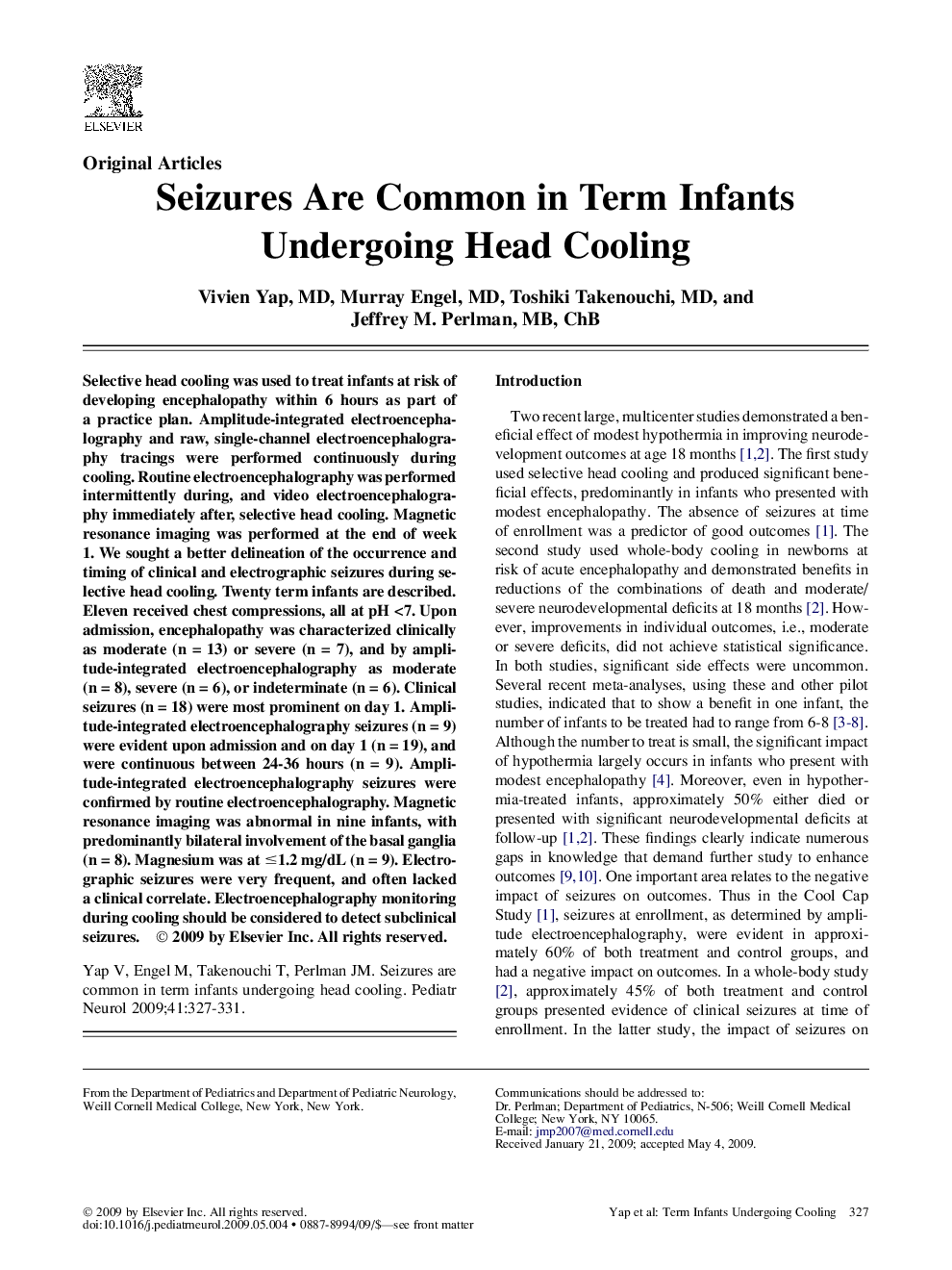| کد مقاله | کد نشریه | سال انتشار | مقاله انگلیسی | نسخه تمام متن |
|---|---|---|---|---|
| 3086113 | 1189846 | 2009 | 5 صفحه PDF | دانلود رایگان |

Selective head cooling was used to treat infants at risk of developing encephalopathy within 6 hours as part of a practice plan. Amplitude-integrated electroencephalography and raw, single-channel electroencephalography tracings were performed continuously during cooling. Routine electroencephalography was performed intermittently during, and video electroencephalography immediately after, selective head cooling. Magnetic resonance imaging was performed at the end of week 1. We sought a better delineation of the occurrence and timing of clinical and electrographic seizures during selective head cooling. Twenty term infants are described. Eleven received chest compressions, all at pH <7. Upon admission, encephalopathy was characterized clinically as moderate (n = 13) or severe (n = 7), and by amplitude-integrated electroencephalography as moderate (n = 8), severe (n = 6), or indeterminate (n = 6). Clinical seizures (n = 18) were most prominent on day 1. Amplitude-integrated electroencephalography seizures (n = 9) were evident upon admission and on day 1 (n = 19), and were continuous between 24-36 hours (n = 9). Amplitude-integrated electroencephalography seizures were confirmed by routine electroencephalography. Magnetic resonance imaging was abnormal in nine infants, with predominantly bilateral involvement of the basal ganglia (n = 8). Magnesium was at ≤1.2 mg/dL (n = 9). Electrographic seizures were very frequent, and often lacked a clinical correlate. Electroencephalography monitoring during cooling should be considered to detect subclinical seizures.
Journal: Pediatric Neurology - Volume 41, Issue 5, November 2009, Pages 327–331